Prime Editions
Get the full Nautilus digital experience.
-

Print Edition 62
Issue 62 of the Nautilus print edition combines some of the best content from our May and June 2025 online issues. It includes contributions from science writer Amanda Gefter, evolutionary biologist Neil Shubin, environmental chemist Alison Spodek, and more. This issue also features new illustrations by Corneila Li, Maria Fedoseeva, and Ellen Weinstein. Nautilus Members enjoy an ad-free experience. Log in or […]
-

Print Edition 61: The Animal Issue
Issue 61 of the Nautilus print edition is our Animal Issue. It includes contributions from pollution ecologist Chris Cosma, Pulitzer Prize-winning author Richard Powers, science writer Brandon Keim, philosopher Eva Meijer, and more. This issue also features new illustrations by Mathias Ball. Nautilus Members enjoy an ad-free experience. Log in or Join now .
-

Print Edition 60
Issue 60 of the Nautilus print edition combines some of the best content from January and February 2025 online. Our cover story is a deep dive into wolf reintroduction in the American Northwest—and what we did to the wolves to make it happen—by editor at large Kevin Berger. This issue also features a new illustration by Jorge Colombo. […]
-

Print Edition 59: The Kinship Issue
Issue 59 of the Nautilus print edition is our Kinship Issue. It includes contributions from philosopher Helen de Cruz, author Philip Ball, anthropologist Harvey Whitehouse, science writer Veronique Greenwood, and more. This issue also features new illustrations by Aad Goudappel. Nautilus Members enjoy an ad-free experience. Log in or Join now .
-

Print Edition 58
Issue 58 of the Nautilus print edition combines some of the best content from our September and October 2024 online issues. It includes contributions from quantum gravity physicist Fotini Markopoulou, geoscientist Marcia Bjornerud, anthropologist Harvey Whitehouse, and more. This issue also features new illustrations by Ellen Weinstein and Mark Belan, as well as a comic by Ken Krimstein. Nautilus Members enjoy an ad-free […]
-

Print Edition 57: The Reality Issue
Issue 57 of the Nautilus print edition is our Reality Issue. It includes contributions from Google VP/Fellow Blaise Agüera y Arcas, theoretical physicist Vijay Balasubramanian, philosopher of science Patricia Palacios, composer Michael Hersch, and more. This issue also features new illustrations by Tim O’Brien. Nautilus Members enjoy an ad-free experience. Log in or Join now .
-
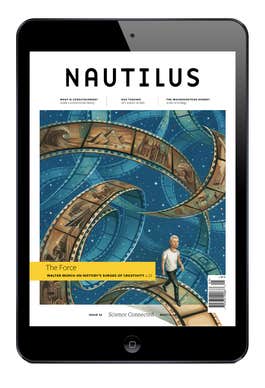
Print Edition 56
Issue 56 of the Nautilus print edition combines some of the best content from our May and June 2024 online issues. It includes contributions from film director Walter Murch, documentary filmmaker Chris Foster, language scientist Julie Sedivy, science writer Amanda Gefter, and more. This issue also features a new illustration by Chris Buzelli. Nautilus Members enjoy an ad-free experience. Log in or Join now […]
-
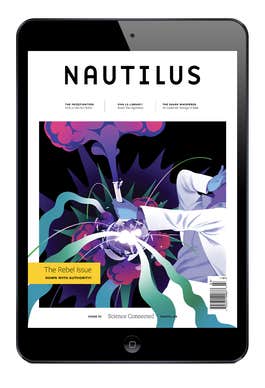
Print Edition 55: The Rebel Issue
Issue 55 of the Nautilus print edition is our Rebel Issue. It includes contributions from science writer Elena Kazamia, astrophysicist Paul M. Sutter, film producer Namir Khaliq, philosopher Jonathon Keats, and more. This issue also features new illustrations by Angie Wang and Mark Belan. Nautilus Members enjoy an ad-free experience. Log in or Join now .
-
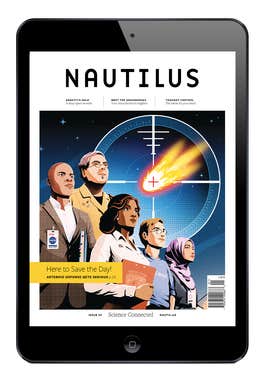
Print Edition 54
Issue 54 of the Nautilus print edition combines some of the best content from our January and February 2024 online issues. It includes contributions from bestselling author Tom Vanderbilt, theoretical physicist Sabine Hossenfelder, journalist Mark MacNamara, evolutionary biologist David P. Barash, and more. This issue also features a new illustration by Mark Belan. Nautilus Members enjoy an ad-free experience. Log in or […]
-

Print Edition 53
Issue 53 of the Nautilus print edition combines some of the best content from our November and December 2023 online issues. It includes contributions from award-winning science journalist Adam Piore, astrophysicist Paul M. Sutter, bestselling author Lucy Cooke, science journalist Dan Falk, and more. This issue also features new illustrations by John Hendrix. Nautilus Members enjoy an ad-free experience. Log in or Join now […]
-

Print Edition 52
Issue 52 of the Nautilus print edition combines some of the best content from our September and October 2023 online issues. It includes contributions from science writer Philip Ball, journalist Elena Kazamia, astrophysicist Paul M. Sutter, writer Shruti Ravindran, and more. This issue also features new illustrations by Mark Belan. Nautilus Members enjoy an ad-free experience. Log in or Join now .
-
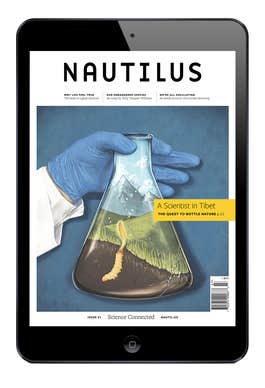
Print Edition 51
Issue 51 of the Nautilus print edition combines some of the best content from our July and August 2023 online issues. It includes contributions from conservation biologist Zhengyang Wang, science writer Alla Katsnelson, astrophysicist Chiara Mingarelli, writer and conservationist Terry Tempest Williams, and more. This issue also features a new illustration by Jennifer Bruce. Nautilus Members enjoy an ad-free experience. […]
-

Print Edition 50
Issue 50 of the Nautilus print edition combines some of the best content from our May and June 2023 online issues. It includes contributions from environmental journalist Charles Digges, neuroscientist Anil Seth, a special section highlighting Facts So Romantic from each previous print issue, and more. This issue also features new illustrations by James Yang and Jorge Colombo. Nautilus Members […]
-

Print Edition 49
Issue 49 of the Nautilus print edition combines some of the best content from our March and April 2023 online issues. It includes contributions from emergency physician and writer Clayton Dalton, science journalist Rachel E. Gross, astrophysicist Sean Raymond, author Danna Staaf, and more. This issue also features a new illustration by Sam Chivers. Nautilus Members enjoy an ad-free […]
-

Print Edition 48
Issue 48 of the Nautilus print edition combines some of the best content from our January and February 2023 online issues. It includes contributions from science writer Amanda Gefter, astrophysicist Paul M. Sutter, physician Rahul Parikh, author Philip Ball, and more. This issue also features a new illustration by Deena So’Oteh. Nautilus Members enjoy an ad-free experience. Log in or Join […]
-

Print Edition 47
Issue 47 of the Nautilus print edition combines some of the best content from our November and December 2022 issues. It includes contributions from paleoclimatologist Summer Praetorius, science writer Katharine Gammon, astrobiologist Caleb Scharf, and more. This issue also features a new illustration by Katherine Streeter. Nautilus Members enjoy an ad-free experience. Log in or Join now .
-

Print Edition 46
Issue 46 of the Nautilus print edition combines some of the best content from our September and October 2022 issues. It includes contributions from award-winning author Philip Ball, psychology professor Laith Al-Shawaf, anthropologist Dimitris Xygalatas, and more. This issue also features a new illustration by Myriam Wares. Nautilus Members enjoy an ad-free experience. Log in or Join now .
-
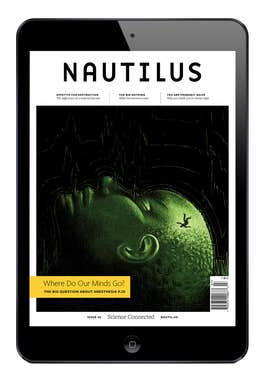
Print Edition 45
Issue 45 of the Nautilus print edition combines some of the best content from our July and August 2022 issues. It includes contributions from science journalist Jackie Rocheleau, psychologist Erika Weisz, astrophysicist Paul M. Sutter, and more. This issue also features a new illustration by Wesley Allsbrook. Nautilus Members enjoy an ad-free experience. Log in or Join now .
-

Print Edition 44
Issue 44 of the Nautilus print edition combines some of the best content from our May and June 2022 issues. It includes contributions from paleontologist Thomas Halliday, astrobiologist Caleb Scharf, science writer Katharine Gammon, and more. This issue also features a new illustration by Yiran Jia. Nautilus Members enjoy an ad-free experience. Log in or Join now .
-

Print Edition 43
Issue 43 of the Nautilus print edition combines some of the best content from our March and April 2022 issues. It includes contributions from best-selling author Gary Marcus, journalist Andrea Pitzer, cognitive scientist Alan Jern, and more. This issue also features a new illustration by Mark Belan. Nautilus Members enjoy an ad-free experience. Log in or Join now […]
-

Print Edition 42
Issue 42 of the Nautilus print edition combines some of the best content from our January and February 2022 issues. It includes contributions from physicist and writer Bob Henderson, astrobiologist Caleb Scharf, neuroscientist Joel Frohlich, and more. This issue also features a new illustration by Sam Chivers. Nautilus Members enjoy an ad-free experience. Log in or […]
-

Print Edition 41
Issue 41 of the Nautilus print edition combines some of the best content from our issues on Change and Excavation. It includes contributions from biologist Bob Goldstein, award-winning science writer Lina Zeldovich, psychology professor Steven Pinker, and more. This issue also features a new illustration by Jorge Colombo. Nautilus Members enjoy an ad-free experience. Log […]
-

Print Edition 40
Issue 40 of the Nautilus print edition combines some of the best content from our issues on Intelligent Life and The Edge. It includes contributions from science journalist Megan Scudellari, astronomer Lisa Kaltenegger, neurologist Suzanne O’Sullivan, and more. This issue also features new illustrations by Mark Belan. Nautilus Members enjoy an ad-free experience. Log […]
-

ISSUE 39
Print Edition 39
Issue 39 of the Nautilus print edition combines some of the best content from our issues on Healthy Communication and Harmony. It includes contributions from biologist Peter Ward, plant neurobiologist Stefano Mancuso, astrophysicist Sarafina El-Badry Nance, and more. This issue also features a new illustration by Zoe Keller. Nautilus Members enjoy an ad-free experience. Log in or Join now .
-
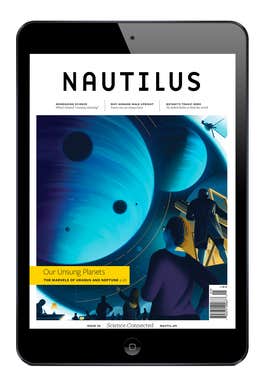
ISSUE 38
Print Edition 38
Issue 38 of the Nautilus print edition combines some of the best content from our issues on Outsiders and Hidden Truths. It includes contributions from science writer Corey S. Powell, astrophysicist Caleb Scharf, history professor Erika Lorraine Milam, and more. This issue also features a new illustration by Sam Chivers. Nautilus Members enjoy an ad-free experience. Log in or Join now .
-

ISSUE 37
Print Edition 37
Issue 37 of the Nautilus print edition combines some of the best content from our issues on Mind and Universality. It includes contributions from psychologist Lisa Feldman Barrett, award-winning geobiologist Hope Jahren, zoologist Arik Kershenbaum, and more. This issue also features new illustrations by Jorge Colombo. Nautilus Members enjoy an ad-free experience. Log […]
-

ISSUE
Print Edition 36
Issue 36 of the Nautilus print edition combines some of the best content from our issues on Escape, Rewired, and Wonder. It includes contributions from story science professor Angus Fletcher, Astronomer Royal Martin Rees, and award-winning science journalist Lina Zeldovich, among others. This issue also features new illustrations by Jonathon Rosen. Nautilus Members enjoy an ad-free experience. Log […]
-
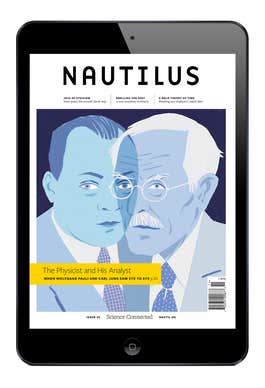
ISSUE 35
Print Edition 35
Issue 35 of the Nautilus print edition combines some of the best content from our issues on Forerunners and Evolving. It includes contributions from physics professor Paul Halpern, award-winning journalist Rachel Nuwer, and theoretical physicist Julian Barbour, among others. This issue also features a new illustration by Jorge Colombo. Nautilus Members enjoy an ad-free […]
-
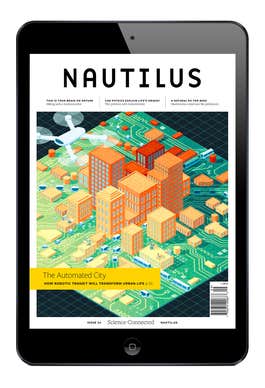
ISSUE 34
Print Edition 34
Issue 34 of the Nautilus print edition combines some of the best content from our issues on Something Green, The Amazing Brain, and Frontiers. It includes contributions from urbanist Anthony Townsend, best-selling science-fiction writer Kim Stanley Robinson, and physicist Jeremy England, among others. This issue also features a new illustration by Myriam Wares. Nautilus Members enjoy an ad-free […]
-

ISSUE 33
Print Edition 33
Issue 33 of the Nautilus print edition combines some of the best content from our issues on Love & Sex and The Dark Side. It includes contributions from mathematician and author Aubrey Clayton, astrophysicist Caleb Scharf, and award-winning science journalist Jo Marchant, among others. This issue also features a new illustration by Jonathon Rosen. Nautilus Members enjoy […]
-

ISSUE 32
Print Edition 32
Issue 32 of the Nautilus print edition combines some of the best content from our issues on Reopening, Energy, and Risk. It includes contributions from paleoclimatologist Summer Praetorius, Roomba inventor Joe Jones, and film director Walter Murch, among others. This issue also features a new illustration by Myriam Wares. Nautilus Members enjoy an ad-free experience. Log in or […]
-

ISSUE 31
Print Edition 31
Issue 31 of the Nautilus print edition combines some of the best content from our issues on Intelligence and Outbreak. It includes contributions from physicist Sabine Hossenfelder, radio producer Steve Paulson, and Gaia hypothesis originator James Lovelock, among others. This issue also features new illustrations by Jorge Colombo. Nautilus Members enjoy an ad-free experience. Log […]
-

ISSUE 30
Print Edition 30
Issue 30 of the Nautilus print edition combines some of the best content from our issues on Aliens, Maps, and Panpsychism. It includes contributions from journalist Corey S. Powell, linguist David Adger, and New York Times bestselling author Annaka Harris, among others. This issue also features a new illustration by Ralph Steadman. Nautilus Members enjoy an ad-free […]
-

ISSUE 29
Print Edition 29
Issue 29 of the Nautilus print edition combines some of the best content from our issues on Underworlds, Atmospheres, and Catalysts. It includes contributions from science and nature journalist Brandon Keim, paleoclimatologist Summer Praetorius, and astrophysicist Martin Rees, among others. This issue also features new illustrations by Jorge Colombo. Nautilus Members enjoy an ad-free experience. Log in […]
-
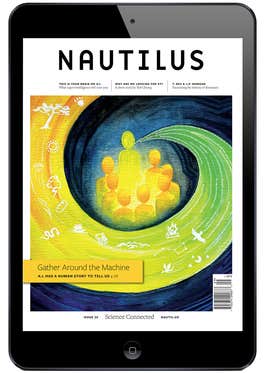
ISSUE 28
Print Edition 28
Issue 28 of the Nautilus print edition combines some of the best content from our issues on Story and Language. It includes contributions from journalist M.R. O’Connor, neuroscientist Robert Burton, award-winning fiction author Ted Chiang, and linguist David Adger, among others. This issue also features new illustrations by K. Cantner. Nautilus Members enjoy an ad-free experience. Log […]
-

ISSUE 27
Print Edition 27
Issue 27 of the Nautilus print edition combines some of the best content from our issues on Quandary, Play, and Networks. It includes contributions from neuroscientist Grigori Guitchounts, anthropologist Barclay Bram, and award-winning science writer George Musser. This issue also features original art by K. Cantner. Nautilus Members enjoy an ad-free experience. Log in […]
-
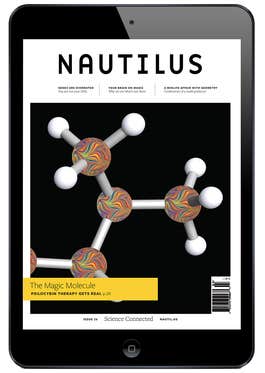
ISSUE 26
Print Edition 26
Issue 26 of the Nautilus print edition combines some of the best content from our issues on Context, Patterns, Variable, and Flow. Nautilus Members enjoy an ad-free experience. Log in or Join now . This issue includes contributions from journalist Moises Velasquez-Manoff, environmental journalist Heather Hansman, evolutionary biologist David P. Barash, and mathematician John Baez.
-

ISSUE 25
Print Edition 25
Issue 25 of the Nautilus print edition combines some of the best content from our issues on Connections, Systems, Horizons, The Unseen, In Plain Sight, Clockwork, and Reboot. Nautilus Members enjoy an ad-free experience. Log in or Join now . This issue includes contributions by: journalist Justin Nobel, Pulitzer Prize-winning author Richard Powers, cognitive neuroscientist Heather Berlin, […]
-

ISSUE
Print Edition 24
Issue 24 of the Nautilus print edition combines some of the best content from our issues on Perspective, Communities, and Self. Nautilus Members enjoy an ad-free experience. Log in or Join now . This issue includes contributions by: archaeologist and medieval historian Alexander Langlands, Japanese artist Hideki Nakazawa, and psychology professor David P. Barash. This […]
-
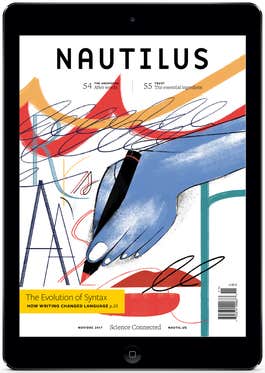
ISSUE
Nov./Dec. 2017
The November/December 2017 Nautilus print edition combines some of the best content from our issues on The Unspoken and Trust. Nautilus Members enjoy an ad-free experience. Log in or Join now . This issue includes contributions by: linguist Julie Sedivy, neuroscience professor and author Stuart Firestein, and anthropologist Dorsa Amir. This issue also features original […]
-

ISSUE
Sept/Oct 2017
The September/October 2017 Nautilus print edition combines some of the best content from our issues on The Hive and Monsters, with new original contributions and gorgeous full-color illustrations. Nautilus Members enjoy an ad-free experience. Log in or Join now . This issue includes contributions by: bestselling author and MIT professor Max Tegmark, tropical ecologist Mark […]
-

ISSUE
July/August 2017
The July/August 2017 Nautilus print edition combines some of the best content from our issues on Emergence and Limits, with new original contributions and gorgeous full-color illustrations. Nautilus Members enjoy an ad-free experience. Log in or Join now . This issue includes contributions by: theoretical physicist Geoffrey West, distinguished psychology professor Lisa Feldman Barrett, and author Jonathan […]
-

ISSUE
May/June 2017
The May/June 2017 Nautilus print edition combines some of the best content from our issues on Chaos and The Absurd, with new original contributions and gorgeous full-color illustrations. Nautilus Members enjoy an ad-free experience. Log in or Join now . This issue includes contributions by: neuroendocrinologist and author Robert Sapolsky; award-winning physics writer Amanda Gefter; and comic […]
-

ISSUE
March/April 2017
The March/April 2017 Nautilus print edition combines some of the best content from our issues on Balance and Consciousness, with new original contributions and gorgeous full-color illustrations. Nautilus Members enjoy an ad-free experience. Log in or Join now . This issue includes contributions by: Prominent physicist Lawrence Krauss, writer Samantha Larson, who at 18 became the youngest person […]
-

ISSUE
Nov./Dec. 2016
The November/December 2016 Nautilus print edition combines some of the best content from our issues on Fakes and Heroes, with new original contributions and gorgeous full-color illustrations. Nautilus Members enjoy an ad-free experience. Log in or Join now . This issue includes contributions by: non-fiction writer Margot Lee Shetterly; neuroendocrinologist and author Robert Sapolsky; award-winning […]
-

ISSUE
May/June 2015
The May/June 2015 Nautilus print magazine combines some of the best content from our issues on Slow, Dominoes, and Error, with new original contributions and gorgeous full-color illustrations. Nautilus Members enjoy an ad-free experience. Log in or Join now . This issue includes contributions by: award-winning science journalist Adam Piore; Helen Fisher; author Abby Rabinowitz; pilot and author Jeff […]
-
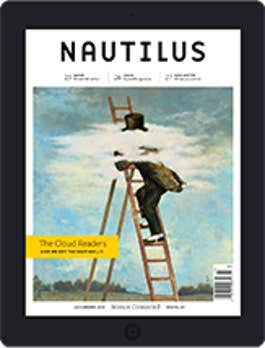
ISSUE
July/August 2015
The July/August 2015 Nautilus print magazine combines some of the best content from our issues on Water, Color, and Dark Matter, with new original contributions and gorgeous full-color illustrations. Nautilus Members enjoy an ad-free experience. Log in or Join now . This issue includes contributions by: author Peter Moore; journalist Michael Green; best-selling author Tom Vanderbilt; and award-winning […]
-

ISSUE
Sept./Oct. 2015
The September/October 2015 Nautilus print magazine combines some of the best content from our issues on 2050 and Scaling, with new original contributions and gorgeous full-color illustrations. Nautilus Members enjoy an ad-free experience. Log in or Join now . This issue includes contributions by: writer and experimental philosopher Jonathon Keats; radio producer Steve Paulson; award-winning author Philip Ball; […]
-
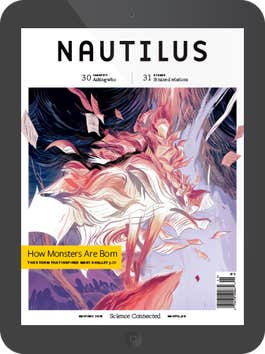
ISSUE
Nov./Dec. 2015
The November/December 2015 Nautilus print magazine combines some of the best content from our issues on Identity and Stress, with new original contributions and gorgeous full-color illustrations. Nautilus Members enjoy an ad-free experience. Log in or Join now . This issue includes contributions by: author Gillen D’Arcy Wood; linguist Julie Sedivy; award-winning illustrator and journalist Steve Brodner; and […]
-

ISSUE
Jan./Feb. 2016
The January/February 2016 Nautilus print edition combines some of the best content from our issues on Space and Attraction, with new original contributions and gorgeous full-color illustrations. Nautilus Members enjoy an ad-free experience. Log in or Join now . This issue includes contributions by: award-winning author George Musser; biological anthropologist Helen Fisher; best-selling author Tom Vanderbilt; and […]
-

ISSUE
March/April 2016
The March/April 2016 Nautilus print edition combines some of the best content from our issues on Adaptation and Boundaries, with new original contributions and gorgeous full-color illustrations. Nautilus Members enjoy an ad-free experience. Log in or Join now . This issue includes contributions by: award-winning scientist Hope Jahren; prominent biologist Sean B. Carroll; award-winning author Philip Ball; and science […]
-

ISSUE
May/June 2016
The May/June 2016 Nautilus print edition combines some of the best content from our issues on Aging and Currents, with new original contributions and gorgeous full-color illustrations. Nautilus Members enjoy an ad-free experience. Log in or Join now . This issue includes contributions by: environmental journalist Jonathan Waldman; photo editor and author Rebecca Horne; best-selling […]
-
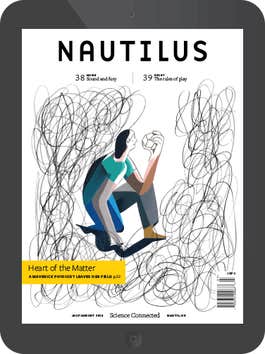
ISSUE
July/August 2016
The July/August 2016 Nautilus print edition combines some of the best content from our issues on Noise and Sport, with new original contributions and gorgeous full-color illustrations. Nautilus Members enjoy an ad-free experience. Log in or Join now . This issue includes contributions by: science journalist Sally Davies; best-selling author J.B. MacKinnon; environmental journalist Courtney […]
-

ISSUE
Sept./Oct. 2016
The September/October 2016 Nautilus print edition combines some of the best content from our issues on Learning and Scaling, with new original contributions and gorgeous full-color illustrations. Nautilus Members enjoy an ad-free experience. Log in or Join now . This issue includes contributions by: award-winning science writer James Gleick; research scientist Kate Marvel; award-winning author Philip Ball; […]
-

ISSUE
Jan./Feb. 2017
The January/February 2017 Nautilus print edition combines some of the best content from our issues on Luck and Power, with new original contributions and gorgeous full-color illustrations. Nautilus Members enjoy an ad-free experience. Log in or Join now . This issue includes contributions by: best-selling author Michael Lewis; linguist Julie Sedivy; writer and photographer John […]
-

ISSUE
March/April 2015
The March/April 2015 Nautilus print magazine (our seventh print edition) combines some of the best content from our issues on Illusions, Creativity, and Information, with new original contributions and gorgeous full-color illustrations. Nautilus Members enjoy an ad-free experience. Log in or Join now . This issue includes contributions by Swedish author and hoverfly collector Fredrik […]
-

ISSUE
Fall 2014
The fifth issue of the Nautilus Quarterly combines some of the best content from our issues on Symmetry, Mutation, and Turbulence, with new original contributions from the world’s best thinkers and gorgeous full-color illustrations. Nautilus Members enjoy an ad-free experience. Log in or Join now . The issue includes contributions by science writer Lee Billings; engineering professor Barbara Oakley; journalist and […]
-

ISSUE
Summer 2014
The fourth issue of the Nautilus Quarterly features some of the best content from our issues on Mergers & Acquisitions, Light, and Feedback, plus new, original essays and rich, full-color illustrations. Nautilus Members enjoy an ad-free experience. Log in or Join now . This issue includes contributions by ecologist Nigel Pitman; best-selling novelist Daniel Kehlmann; award-winning author Philip Ball; Columbia […]
-

ISSUE
Spring 2014
The third issue of the Nautilus Quarterly combines some of the best online content from our issues on Waste, Home, and Time with original essays and rich, full-color illustrations. Nautilus Members enjoy an ad-free experience. Log in or Join now . The issue includes contributions by investigative journalist Anna Badkehn; former editor in chief of Discover Corey […]
-

ISSUE
Winter 2015
The sixth issue of the Nautilus Quarterly combines some of the best content from our issues on Nothingness, Big Bangs, and Genius, with new original contributions from the world’s best thinkers and gorgeous full-color illustrations. Nautilus Members enjoy an ad-free experience. Log in or Join now . This issue includes contributions by geneticist Scott Solomon; Caltech physicist and best-selling author […]
-

ISSUE
Winter 2014
The second issue of the Nautilus Quarterly combines some of the best content from our online issues on The Unlikely, Fame, and Secret Codes, with new original contributions from the world’s best thinkers, and gorgeous full-color illustrations. Nautilus Members enjoy an ad-free experience. Log in or Join now . The issue includes contributions by actor, […]
-
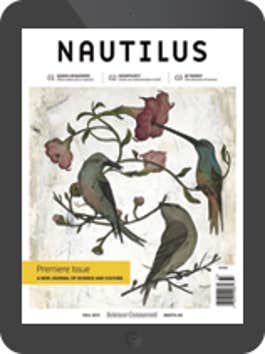
ISSUE
Fall 2013
The inaugural issue of the Nautilus Quarterly combines some of the best content from our issues on Human Uniqueness, Uncertainty, and In Transit, with new original contributions from the world’s best thinkers and gorgeous full-color illustrations. Nautilus Members enjoy an ad-free experience. Log in or Join now . The issue includes contributions by Stanford University Primatologist Robert Sapolsky; quantum […]
-
 PURCHASE
PURCHASEISSUE 92
Frontiers
Science is a perennial journey to the frontiers of knowledge, where transformations of life and society begin. This month we venture from the quark to the black hole, with plenty of surprises on Earth along the way, to spotlight head-spinning research and experiments. Nautilus Members enjoy an ad-free experience. Log in or Join now […]
-
 PURCHASE
PURCHASEISSUE 91
The Amazing Brain
Scientists—to be specific, neuroscientist David Eagleman and cognitive scientist Ann-Sophie Barwich—evoke the poet Emily Dickinson in this mini-issue of Nautilus as they explain how the brain absorbs the world, “As Sponges—Buckets—do.” In the scientists’ words, the brain’s bioelectrical ability to change and adapt, in response to environments in flux, is a marvel. Nautilus Members enjoy […]
-
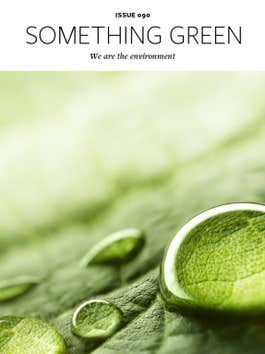 PURCHASE
PURCHASEISSUE 90
Something Green
Feeling connected to nature is important. It inspires empathy and a desire to preserve what is being lost. But empathy is not enough. Conservation is about sustaining ourselves in tune with nature. Highlighting the threads of that harmony is where science comes in, and where this issue of Nautilus follows. Nautilus Members enjoy an […]
-
 PURCHASE
PURCHASEISSUE 89
The Dark Side
The darkness is coming after the light. That’s what life during this pandemic feels like. Ultimately it will be science that will quench the virus and restore the light. That’s what science has always done—shown the way out of confusion and despair, illuminated nature, within and without us. This issue follows the light of science […]
-
 PURCHASE
PURCHASEISSUE 88
Love & Sex
Scientists can be in love, of course, overcome by its joys, overwhelmed by its pains. But when they put on their lab coats, love and sex are all about the caudate nucleus and dopamine. But the science of love doesn’t shuttle romance to the wilderness. Science is a light on our path to understand ourselves […]
-
 PURCHASE
PURCHASEISSUE 87
Risk
Risk is at the heart of poker. You might win it all. You might lose it all. But nobody succeeds without taking it. The trick is to understand that internal calculus. Analyze and understand it to the point where the cliff from which you’re jumping feels safe. Nautilus Members enjoy an ad-free experience. […]
-
 PURCHASE
PURCHASEISSUE 86
Energy
Could anything be more fundamental in life and science than energy? And be more various and mysterious? Energy may be the term we use most often without quite knowing what it means. So how do you begin to plumb the many meanings of energy? Nautilus Members enjoy an ad-free experience. Log in or […]
-
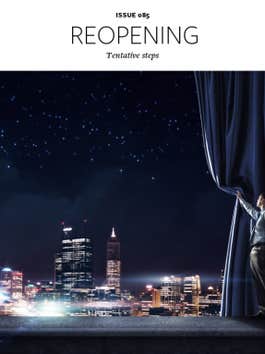 PURCHASE
PURCHASEISSUE 85
Reopening
The story is changing. The world has not reopened but there is a sense it can. In this state of hopeful limbo, things don’t look the same as they did three months ago, two weeks ago, one day ago. This mini-issue of Nautilus turns its journalistic and scientific focus on the changing view outside our […]
-
 PURCHASE
PURCHASEISSUE 84
Outbreak
It’s a time like none other for us for Nautilus, as it is for every publication. What can we do to help you understand what’s happening to us? That’s the question that drives every article we’ve done and are planning to do on the coronavirus pandemic. Nautilus Members enjoy an ad-free experience. Log in […]
-
 PURCHASE
PURCHASEISSUE 83
Intelligence
When it comes to intelligence, the mind is overrated. We explore body intelligence and emotional intelligence, and finer still, cellular intelligence. We peer into the black boxes of artificial intelligence, where the future looks dangerous. The intelligences in the sciences, and of the sciences, are without bounds. Nautilus Members enjoy an ad-free experience. Log […]
-
 PURCHASE
PURCHASEISSUE 82
Panpsychism
The debate over panpsychism has only got hotter in the past few years, not only in Nautilus, of course, but in articles and books. In this mini-issue we head back into the debate with new perspectives on panpsychism, which don’t solve the hard problem, but do inch close to the heart of matter. Nautilus […]
-
 PURCHASE
PURCHASEISSUE 81
Maps
“Usefulness” may be a utilitarian term but it does the job of capturing what’s remarkable about maps, and what inspires this issue of Nautilus—illuminating the signs and symbols, notably language, that imperfect humans employ to represent reality. Nautilus Members enjoy an ad-free experience. Log in or Join now .
-
 PURCHASE
PURCHASEISSUE 80
Aliens
The search for extraterrestrial life is a funny thing in science. It’s like a private hobby, best not discussed at work with colleagues, nor with friends at parties. It’s OK now and again to illuminate the search for alien life, an interlude in the symphony of scientific work. And that’s just what we’re offering in […]
-

-
 PURCHASE
PURCHASEISSUE 78
Atmospheres
This month we are turning our magnifying glasses on atmospheres. With global warming upon us, the time is now for a closer look. Can what we do in our cultural and personal atmospheres change what happens in Earth’s atmosphere? Nautilus Members enjoy an ad-free experience. Log in or Join now .
-
 PURCHASE
PURCHASEISSUE 77
Underworlds
Science is a journey into the unseen, the hidden, the unknown. It’s a journey into the human brain to uncover the neural connections that guide our behavior in the dark, outside the light of conscious awareness. Seismic forces, slowly shifting tectonic plates, the earth remaking itself, are happening beneath our feet, and we above want […]
-
 PURCHASE
PURCHASEISSUE 76
Language
We look at how language elevates our spirits and lets them down. We delve into its origins in our animal ancestors and show that while language may distinguish us from our animals, it also links us to them. Language, we show, shapes our thoughts, but also frees them. Nautilus Members enjoy an ad-free experience. […]
-

-
 PURCHASE
PURCHASEISSUE 74
Networks
That’s one small step for man. One giant leap for mankind. Yes, 2019 marks the 50th anniversary of Arpanet, a network that linked four computer nodes in 1969, the prototype of today’s Internet, a giant leap for humankind. (That moon landing was pretty significant, too.) Nautilus Members enjoy an ad-free experience. Log in […]
-
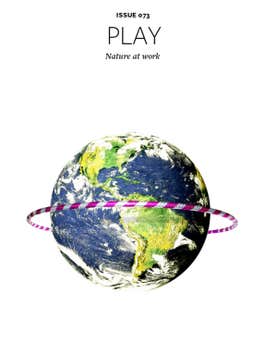 PURCHASE
PURCHASEISSUE 73
Play
Nature loves to play. And play is the thing throughout this issue. Indre Viskontas takes us inside the concert hall to explain how musical ensemble tap into brain wells of creativity and empathy that can’t be reached by going it alone. We also look at a dark side of play. Barclay Bram shares his everyday […]
-
 PURCHASE
PURCHASEISSUE 72
Quandary
This month’s theme, “Quandary,” features articles that rebalance the fear that science is out of control, that playing God has set humanity on an inexorable path of destruction. This issue presents new essays, articles, and interviews that crack open quandaries in manifold fields of science. Nautilus Members enjoy an ad-free experience. Log in or […]
-
 PURCHASE
PURCHASEISSUE 71
Flow
Engineers tell us flow describes how fluids or gases behave in relationship to their environment. Flow can be smooth or turbulent. But when it’s turbulent, scientists are baffled about what in the world’s going on. Then again, flow can be a transcendent feeling. It can lift you out of time, make you feel one with […]
-
 PURCHASE
PURCHASEISSUE 70
Variables
Controlling variables in search of a hypothetical result is one of the most important methods in science. But the concept of variables is not limited to methodology. A variable is a reminder that a shift in perception can spring us from cliché and deepen our knowledge and understanding. Nautilus Members enjoy an ad-free […]
-
 PURCHASE
PURCHASEISSUE 69
Patterns
There is something beguiling about the possibility that the letters making up our DNA are also used somewhere far away. On the other hand, the lack of any such message may make the stronger point, telling us that the meaning we’re looking for is scattered across a much broader canvas, and ours to discover. […]
-
 PURCHASE
PURCHASEISSUE 68
Context
Among its many peculiarities, the human brain has a habit of not responding in the same way to identical inputs. This may be due to the fact that our eyes and ears are noisy instruments, or because signals move in a stochastic fashion from neuron to neuron. It may also simply be a matter of […]
-
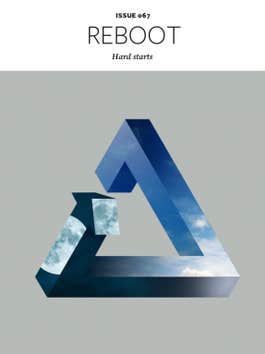
-
 PURCHASE
PURCHASEISSUE 66
Clockwork
The natural world is more relative and fluid than we’d imagined, and our human world is run through with its own mechanisms, many of them our own creation. Physicists talk of many landscapes of physical laws and universes, and our most human characteristics are echoed and copied by both nature and technology. Nautilus Members […]
-
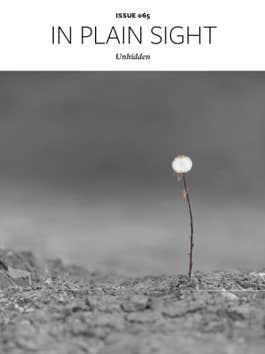 PURCHASE
PURCHASEISSUE 65
In Plain Sight
Cognitive distortions like selective attention are how we keep ourselves happy. As we age, we increasingly focus on happy memories, and place more emphasis on emotional regulation than on information accuracy. Nautilus Members enjoy an ad-free experience. Log in or Join now .
-
 PURCHASE
PURCHASEISSUE 64
The Unseen
For something like 5,000 years, astronomy was the analysis of starlight. In the mid 20th century, cosmic rays were added to the mix, and then neutrinos. Two years ago came gravitational waves. Science advances, not just by seeing better, but by inventing whole new categories of seeing. Nautilus Members enjoy an ad-free experience. Log […]
-
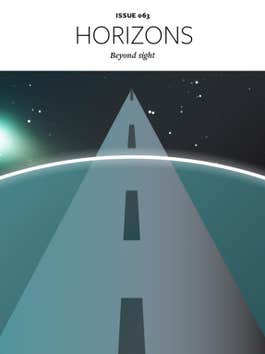 PURCHASE
PURCHASEISSUE 63
Horizons
For sheer color, you can’t do much better than a black hole event horizon. It swallows everything without a trace, but it also evaporates. It may contain a wall of fire created by disentangling virtual particles. Unless it’s a fuzzball made of fundamental strings, in which case it has “hair” instead of a firewall. […]
-
 PURCHASE
PURCHASEISSUE 62
Systems
Systems can surprise us. Out of neurons comes consciousness. Out of cars, traffic jams. Just as interesting as these emergent properties, but less discussed, are submergent properties, in which the causal arrow points down rather than up. The group changes the individual. Nautilus Members enjoy an ad-free experience. Log in or Join now .
-
 PURCHASE
PURCHASEISSUE 61
Coordinates
The more we learn about coordinates, the more we understand their tendency to melt into each other. Far-flung bits of space can get entangled. At the tiniest scales, space and time dissolve into a complex foam. In the brain, grid cells that mark our location in space also help us demarcate time. Nautilus Members enjoy […]
-

-
 PURCHASE
PURCHASEISSUE 59
Connections
Connection has an exponential, multiplicative power to create complexity. It’s where the meat of the hardest problems—like consciousness—lies. It can also make problems harder than they first seem to be. Nautilus Members enjoy an ad-free experience. Log in or Join now .
-
 PURCHASE
PURCHASEISSUE 58
Self
What interesting stories are out there that involve the self but do not involve people? Complex systems seem to resist the privileged perspective necessary to define a “self.” If nature preaches a deep relativism, is our attachment to the idea of self a human foible? Nautilus Members enjoy an ad-free experience. Log in or Join […]
-
 PURCHASE
PURCHASEISSUE 57
Communities
While we sequence the genetic codes that make our cells unique, we build giant cities that look like cells from space. While we take on more personal responsibility, we divine the outlines of what can only be accomplished through groups. We build new kinds of individuality together with the networks that support them. Nautilus […]
-
 PURCHASE
PURCHASEISSUE 56
Perspective
The importance of perspective in science cannot be understated and yet often is. From the outside, science can seem like a common noun, a smooth and untextured monolith containing the Truth. But science is a method and not a body of knowledge, and it is practiced by fallible humans. Nautilus Members enjoy an ad-free […]
-
 PURCHASE
PURCHASEISSUE 55
Trust
Trust appears to be in decline. Trust in government around the world is on the ebb, and is at historic lows in the U.S. We’re awash in stories of abuse of trust by leaders from all walks of life. The institution of science has a special role to play in the trust wars. Feynman told us, […]
-
 PURCHASE
PURCHASEISSUE 54
The Unspoken
The philosophers knew it first. “Silence is the element in which great things fashion themselves together,” wrote Thomas Carlyle in 1831. Since then, science has redefined the word. Nautilus Members enjoy an ad-free experience. Log in or Join now .
-

-
 PURCHASE
PURCHASEISSUE 52
The Hive
We like to make the hive personal. While we undermine the hive in stories, we build ever-better versions of it in reality. As our neighborhoods grow denser, public conversations move to social media, and blockchain decentralizes authority, we move closer to discovering whether the personal hive is really a contradiction in term. Nautilus […]
-
 PURCHASE
PURCHASEISSUE 51
Limits
There are the limits that are formally unbeatable: things like the speed of light and quantum indeterminacy. They’re interesting because they describe an unexpected border between the philosophical and technological. And because we are still trying to beat them. Nautilus Members enjoy an ad-free experience. Log in or Join now .
-
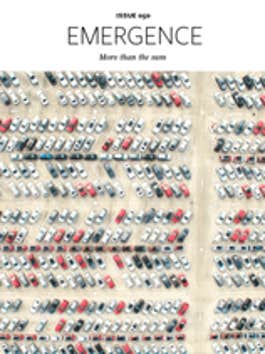
ISSUE 50
Emergence
At each level of complexity in nature, “entirely new properties appear,” wrote Nobel Laureate Philip Anderson in 1972. In other words, we should expect new scientific foundations to emerge from complex systems. Nautilus Members enjoy an ad-free experience. Log in or Join now .
-
 PURCHASE
PURCHASEISSUE 49
The Absurd
The absurd has a way of crystallizing our thinking. Satire spurs social change. Extreme coincidences in the fundamental constants of physics challenge us to reconsider our metaphysics. We got where we are with the help of the absurd. Without it, life would be strange indeed. Nautilus Members enjoy an ad-free experience. Log in or […]
-
 PURCHASE
PURCHASEISSUE 47
Consciousness
Consciousness is a hard problem because it is emergent, mixes software and hardware, and is dizzyingly self-referential. It’s harder still because, in a sense, it impossible to study directly. Nautilus Members enjoy an ad-free experience. Log in or Join now .
-
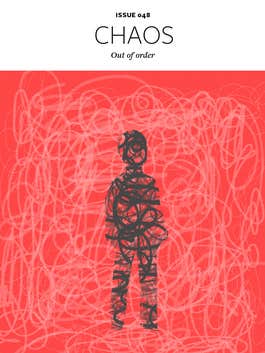
-
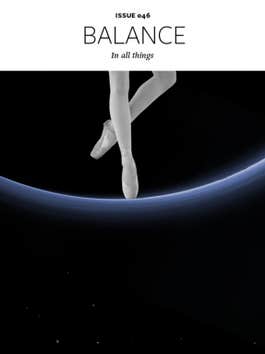 PURCHASE
PURCHASEISSUE 46
Balance
Peel back one balance, and you find another. In this issue, each balance leans against the next: mental against physical, evolutionary against ecological, one infinity against another. The web of balances that make up our world is intricate, full of tiny stable points and unexpected transitions. Nautilus Members enjoy an ad-free experience. Log in […]
-
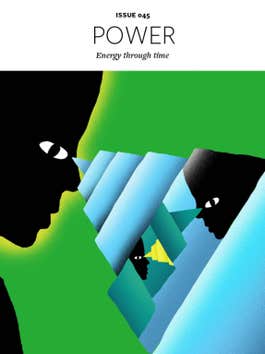 PURCHASE
PURCHASEISSUE 45
Power
Problems of power resist solution. As other aspects of our lives have been entirely transformed for the better—the ability to communicate with each other, for example—just a little over a tenth of the world lives in a full democracy, and democratization has stalled or reversed in many parts of the world. Why is power a […]
-
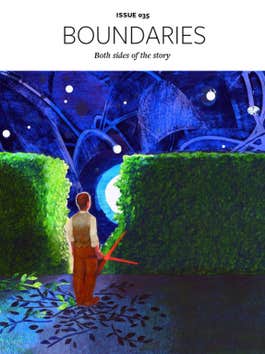 PURCHASE
PURCHASEISSUE 35
Boundaries
If rules only exist to be broken, then so do boundaries. After all, a boundary is just a rule in space. Boundaries end up facilitating exchanges as much as blocking them, and some of the most productive activities happen in their vicinity. Nautilus Members enjoy an ad-free experience. Log in or Join now .
-

-
 PURCHASE
PURCHASEISSUE 38
Noise
It’s hard to imagine any signal coming from space that would be of no interest. Our modern definition of noise, as unwanted sound or signal, is a relatively recent one—the word used to mean strife, and nausea. Is the new meaning useful? Or does it encourage us to dismiss what we can’t interpret? […]
-
 PURCHASE
PURCHASEISSUE 37
Currents
There is a miles-long solitary wave trundling its way across an ocean right now. It will travel for days on end before dissipating its billions of joules of energy. From motes of methane pushed by distant starlight, to words smuggled out of a silent place, our world is full of unseen currents that carry and […]
-
 PURCHASE
PURCHASEISSUE 39
Sport
When we think of sports science and technology, the physics of a curveball might come to mind—the hardware. But there is also a high technology, of sorts, in the software of sport. Without it, would we understand sportsmanship, and what it means to love playing more than winning? Nautilus Members enjoy an ad-free experience. […]
-
 PURCHASE
PURCHASEISSUE 40
Learning
Have you seen the videos of the crow solving an eight-stage puzzle? Or of Lee Sedol losing to DeepMind? Learning seems to extend everywhere from the mobile above an infant’s crib to machines to, some argue, evolution and physical law. As we discover and build new learning systems, the biggest lessons may be about how […]
-
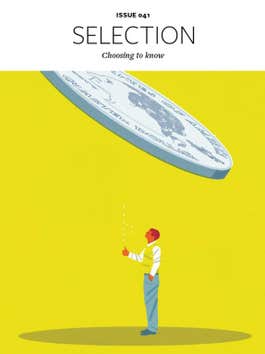 PURCHASE
PURCHASEISSUE 41
Selection
Even Mother Nature can seem reluctant to choose, keeping cats both dead and alive, and running up a large multiverse tab. By some accounts, there is no such thing as time, or events, which means that what we experience as choices are just mathematical solutions to distant boundary value problems. Nautilus Members enjoy […]
-
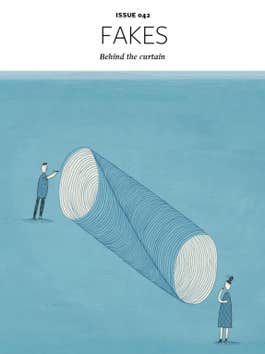 PURCHASE
PURCHASEISSUE 42
Fakes
We are more concerned than ever with fakes, maybe because it’s easier than ever to manufacture them. From fake diamonds to fake journals, we inhabit a space created by technology, complexity, and a fracturing of authority, and spend plenty of time making stuff up. Nautilus Members enjoy an ad-free experience. Log in or Join […]
-

-
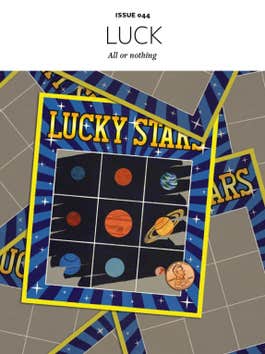
-
 PURCHASE
PURCHASEISSUE 23
Dominoes
One dreary Tuesday, Leó Szilárd took a walk. Crossing the street, he realized that nuclear reactions could be maintained by the neutrons they themselves produced. A self-sustaining nuclear reactor became a reality nine years later, and the bomb in another three. This issue, we watch dominoes fall in human lives, across the oceans and under cities. They […]
-
 PURCHASE
PURCHASEISSUE 24
Error
Nature is full of “mistakes,” from improperly copied genes to animals deceiving each other. Even foundational physics has shed some of its air of mathematical inevitability, and wrestles with why we live in a universe that is “right” for life. Is there a “wrong” universe out there? And how does the scientist negotiate this hall […]
-
 PURCHASE
PURCHASEISSUE 25
Water
What could we not know about water? As it turns out, plenty. It covers most of the Earth, but is regularly in short supply. It is intimately involved in the processes of life, but life on other planets may not need it. It is inscrutable and unpredictable, but we try to price it. The debates […]
-
 PURCHASE
PURCHASEISSUE 26
Color
Envy is green, anger is red, and exoplanet artist renderings are usually swirly brown. Purple used to mean royal, until the chemists figured out how to make it cheaply. Blue is usually the last color to be introduced into a language. And for the philosopher? It’s all qualia. Nautilus Members enjoy an ad-free experience. Log […]
-
 PURCHASE
PURCHASEISSUE 27
Dark Matter
While the cosmological version is the most famous, it is far from the only dark matter story in science. There are silent neurons, missing fossils, and nighttime animal migration; death and conception; algorithms both genetic and man-made. Seeing, it turns out, isn’t the only path to believing. […]
-
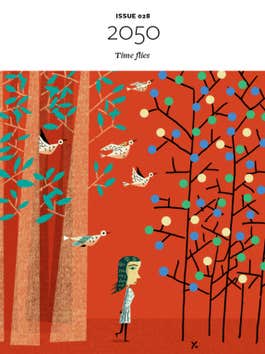 PURCHASE
PURCHASEISSUE 28
2050
While the near future is a choice, the distant future is an institution. Governments and non-profits produce long-term forecasts by the thousands. Fortunes change hands based on corporate earnings expectations. People have constructed over 10,000 active time capsules. Despite all of this frenetic activity, the future is more often than not a surprise. […]
-
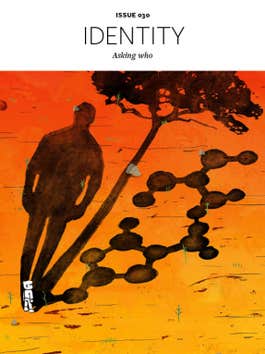 PURCHASE
PURCHASEISSUE 30
Identity
Science has taken many of our putative identities and melted them together. But we are jealous of our human identities. Those, we’d like to think are different. We’d like to keep them intact and persistent. Given what we know, is that a fool’s errand? Nautilus Members enjoy an ad-free experience. Log in or Join now […]
-
 PURCHASE
PURCHASEISSUE 31
Stress
Stress is a complicated adversary. It is a silent killer, but a little bit is good for you. Pushing things and people past their usual boundaries has made the world the way it is, and naturally involves the unknown. Would we want it any other way? Nautilus Members enjoy an […]
-
 PURCHASE
PURCHASEISSUE 32
Space
Try imagining a universe without color, or time. Unusual, but possible to visualize. Now try imagining a universe without space. What does it look like? Without space, we seem not to be able to start. READ ONLINE Nautilus Members enjoy an ad-free experience. Log in or Join now .
-
 PURCHASE
PURCHASEISSUE 33
Attraction
Opposites attract. Or is it birds of a feather flock together? Our brains could be chaotic storms governed by strange attractors. Or is the chaos ungoverned, and less important than we think? When it comes to attraction, nothing is simple. Nautilus Members enjoy an ad-free experience. Log in or Join now .
-
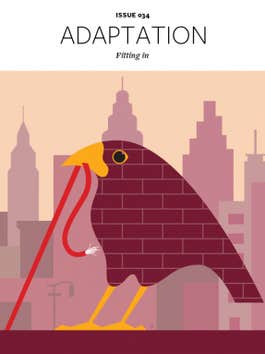 PURCHASE
PURCHASEISSUE 34
Adaptation
Adaptation is hard—everywhere. Organisms responding to a changing environment may cycle through failed designs, or perish by evolving too slowly. A self-driving car moving down an unfamiliar road will suddenly try to take an imaginary exit. It’s harder to make someone change their mind than it is to tell them they’re right. Nautilus Members enjoy […]
-
 PURCHASE
PURCHASEISSUE 29
Scaling
How things become bigger or smaller reveals a lot about them. How big can a city get and still be a city? What about a classroom? Can a “theory of everything” describe our universe at all possible scales? “How much,” we learn, is often just as important as “why” or “how.” Nautilus Members enjoy an […]
-
 PURCHASE
PURCHASEISSUE 22
Slow
Slow is good. That’s the message of more than a dozen modern slowness movements, from slow fashion to slow food to slow church, most of which have sprung up in the last 20 years, and most of which point a steady finger at modernity. This issue is full of people chasing slow. Slow living, slow […]
-
 PURCHASE
PURCHASEISSUE 12
Feedback
This issue, we cast our gaze onto the feedback loops that regulate, control, and sometimes destabilize the world around us. We unearth them at every scale of space and time, from ants to continents, seconds to millions of years, human myths to the origins of life. Most surprising of all, we find a world carefully […]
-
 PURCHASE
PURCHASEISSUE 2
Uncertainty
Uncertainty is baked into our modern world. We explore how everything from quantum particles to humans themselves turn out to be undetermined in ways that upset expectations. Even mathematics itself—the language of logic—includes statements that can be proven to be neither true nor false. Nautilus Members enjoy an ad-free experience. Log in or Join now […]
-
 PURCHASE
PURCHASEISSUE 11
Light
Where does the story of life and light begin? Maybe with the fact that most life on Earth runs on sunlight, or that starlight may have set the direction in which all of Earth’s biomolecules spiral. But, when most of us cannot see the Milky Way, and glowing screens have shifted our circadian rhythms, have […]
-
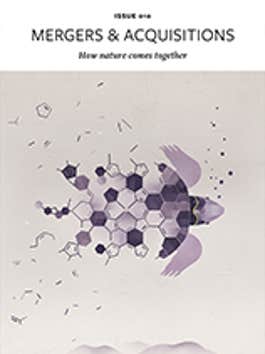 PURCHASE
PURCHASEISSUE 10
Mergers & Acquisitions
Since the beginning, scientists have been dividing reality into increasingly smaller bits: atoms, quarks, proteins, genes. As the list of parts has multiplied, so have their possible interactions, making the boundaries around scientific disciplines increasingly porous. From polymers to parasites, and genes to galaxies, our world is replete with wheelers and dealers, and hosts more shotgun […]
-
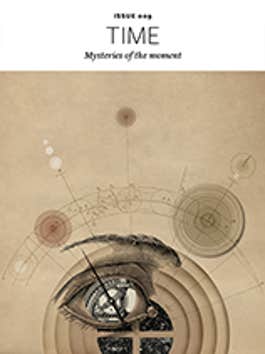 PURCHASE
PURCHASEISSUE 9
Time
Remember Ben Franklin’s words: “you may delay, but time will not.” On the other hand, some physicists are telling us that time may not exist to begin with. And anyway, since quantum mechanics is challenging causality itself, what impact could your actions possibly have? As we look deeper, time looks more elastic and less defined. […]
-
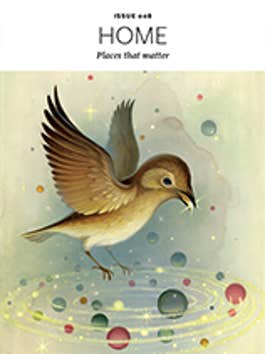 PURCHASE
PURCHASEISSUE 8
Home
They say that home is the place where they have to take you in. Is it? From stellar birth clusters and allergic adaption, to symbiotic evolution and our personal microbiome, Nature has its own definitions of home. And our own ideas are shifting: Our physical homes are under renovation, and what we do at home […]
-
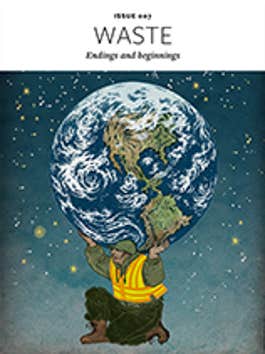 PURCHASE
PURCHASEISSUE 7
Waste
This issue tackles something we don’t like to think about. But not only is waste everywhere on our land, in our oceans, and even in space—it is also useful. It drives innovation, creates wealth, teaches us about the past, and is a kind of currency in systems from biology to physics. Nautilus Members enjoy an […]
-
 PURCHASE
PURCHASEISSUE 6
Secret Codes
There were hackers long before the denial-of-service attack. Life is a script written in carbon and transmitted faithfully between generations—sometimes. Other times, it is hacked by viruses, stolen by bacteria, or mutated by cosmic rays. Join us as we pull back the curtain on nature’s information wars. Nautilus Members enjoy an ad-free experience. Log in […]
-
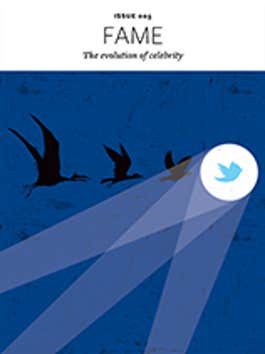 PURCHASE
PURCHASEISSUE 5
Fame
Why is “Honey Boo-Boo” a megastar? Fame can seem an empty category. But it also shows up everywhere. Daniel Dennett has described consciousness as the happy spoils of a competition among various representations of reality: “fame in the brain.” Is fame an important natural process, and our obsession with it inevitable? Nautilus Members enjoy an […]
-
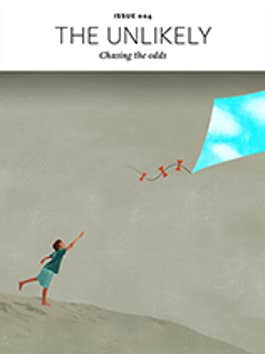 PURCHASE
PURCHASEISSUE 4
The Unlikely
“What are the odds?” This is a surprisingly difficult, and loaded, question. Is the improbable event an indication of some hidden mechanism? Or is it just long odds? In this issue, we explore The Unlikely—from how to predict it, to how to live with what we couldn’t predict. Nautilus Members enjoy an ad-free experience. Log […]
-
 PURCHASE
PURCHASEISSUE 3
In Transit
This issue is all about life in motion, from electrons in microchips to proteins in cells to ocean tankers to planets wandering the cosmos. Over and over we are surprised to find that “just getting there” is an integral part of our world, and something that defines it. Nautilus Members enjoy an ad-free experience. Log […]
-
 PURCHASE
PURCHASEISSUE 13
Symmetry
Symmetry, on first glance a mere detail of arrangement, has unexpected powers, aesthetic, practical—even moral. We find it in physics, families, and the brain. As shorthand, it heightens our powers of observation, helping us recognize faces and calculate particle interactions. As organizing principle, it steers genes and galaxies. Scientists, long ago convinced that it is […]
-
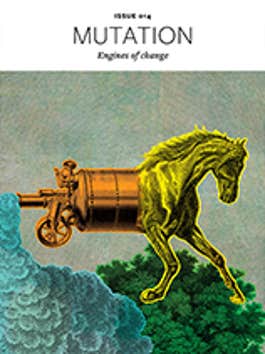 PURCHASE
PURCHASEISSUE 14
Mutation
Mutations make us what we are, linking and blurring the harmful and the helpful. Even the most intricate biological mechanisms, with the most important functions, are already slipping into the future to do something else. In this issue, we trace the outlines of a world that is continually abandoning and inventing itself, often with our […]
-
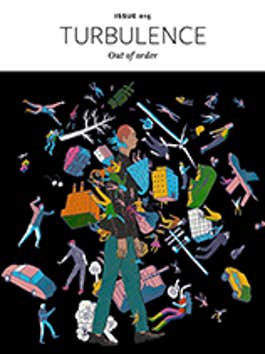 PURCHASE
PURCHASEISSUE 15
Turbulence
Is turbulence simply the breakdown of order? Or is it, in fact, order by another name? Cosmic winds, the human heartbeat, and financial markets all have it. What commonalities persist among all these examples? Can turbulence be controlled, and should we try? Nautilus Members enjoy an ad-free experience. Log in or Join now .
-
 PURCHASE
PURCHASEISSUE 16
Nothingness
Nothingness is a category that stands apart from all others, defying description and tracing the boundaries of our knowledge. Forever trying to banish it and explain it away, we are also endlessly fascinated with it. From virtual particles filling the vacuum, to the invention of zero, to Sartre’s claim that nothingness lies at the heart […]
-
 PURCHASE
PURCHASEISSUE 17
Big Bangs
Where do we start? Often, with a bang. Take our modern universe. It didn’t grow slowly and linearly, but was instead a violent departure from what came before. Big Bangs like this aren’t exclusive to cosmology: There are the sudden appearance of language and tool use, the Cambrian explosion in the diversity of life on […]
-
 PURCHASE
PURCHASEISSUE 18
Genius
Genius is a category that is both important and not well understood. Is genius accomplishment or talent? Social construct or hard fact? Derivative of intellect or something else? Restricted to humans? An evolutionary advantage, or a weed? Nautilus Members enjoy an ad-free experience. Log in or Join now .
-
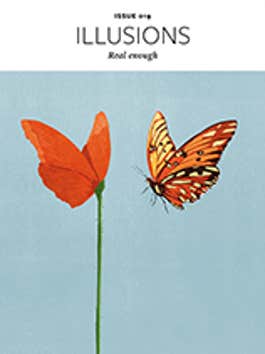 PURCHASE
PURCHASEISSUE 19
Illusions
Long before David Blaine, there was the mimicry of the tiger moth—it avoids bats by emitting an ultrasonic signature similar to that of a noxious species. Long before that, some physicists say, an alien civilization launched an intricate simulation of reality, which we currently inhabit. Even if that hypothesis is false, don’t we entertain our […]
-
 PURCHASE
PURCHASEISSUE 20
Creativity
While we sometimes consider creativity a hallmark of being human, it is not only a human trait. Crows can perform experiments and use induction; computers can evolve new algorithms that surprise their human programmers. Is creativity a mechanical and inanimate thing, so human creativity differs only in degree? Or is human creativity different, reflecting something […]
-
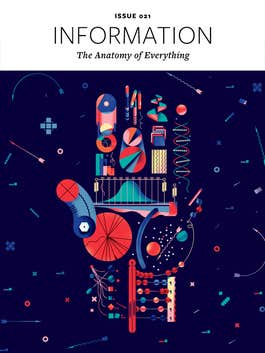 PURCHASE
PURCHASEISSUE 21
Information
We’re living in the information age. We’ve uncovered vast stores of information in our genes, generated even more, interpreted physical law in terms of information flow—and we’re always on our phones. What is the difference between a fact and information? Does information need a consciousness to interpret it? Old notions of information, and our relationship to it, […]
-
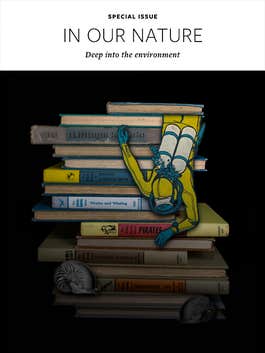 PURCHASE
PURCHASEISSUE SPECIAL ISSUE
In Our Nature
Nature is “the phenomena of the physical world collectively … as opposed to humans or human creations,” according to the Oxford English Dictionary. There’s us, and there’s our environment. Where the definition separates us from nature, the word itself reminds us how linked we are. Nature emerges not just as a backdrop, but as a character on […]
-
 PURCHASE
PURCHASEISSUE PREMIERE ISSUE
The Story of Nautilus
Behold the humble nautilus. We became interested in it here at Nautilus because, well, we stole its name. But also because (for a mollusk) it represents a remarkable intersection of science, math, myth, and culture. Since that is exactly the kind of intersection we love to write about, we decided to put together a little “teaser” issue all […]














